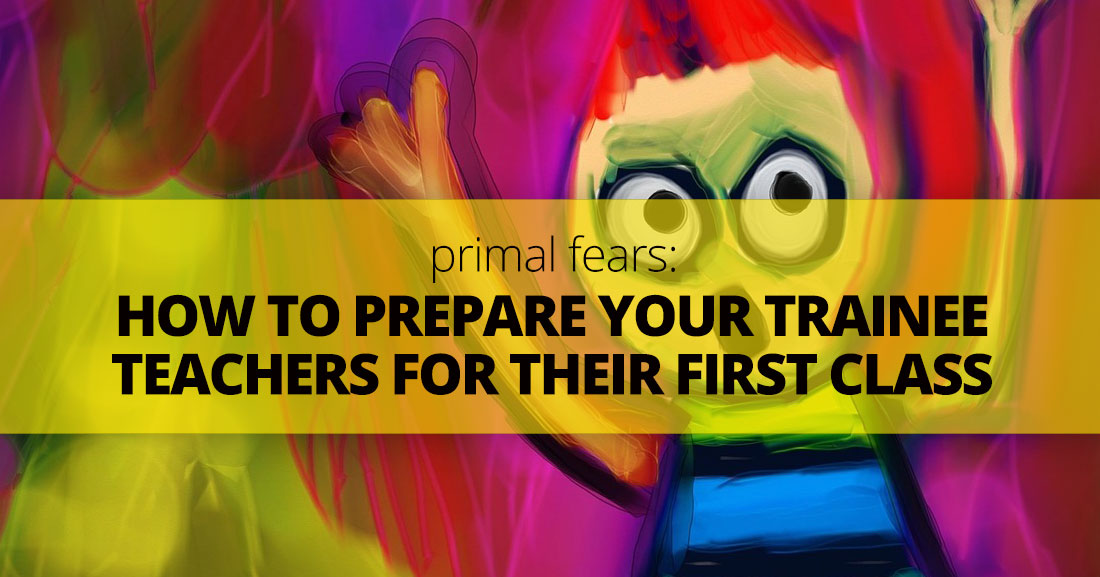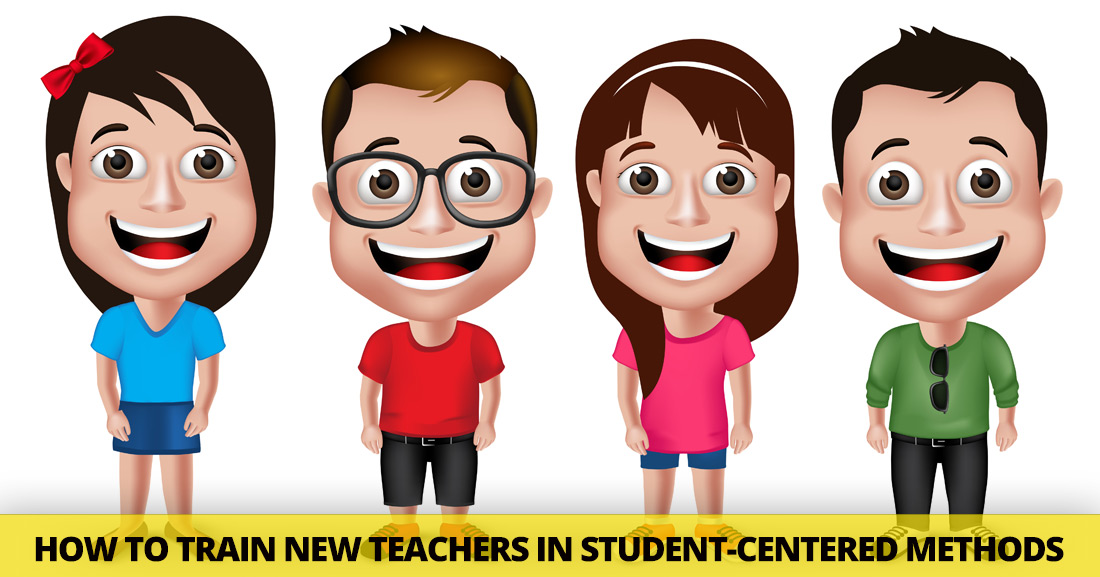Primal Fears: Preparing Your Trainee Teachers for Their First Class


There would probably be a lot you’d want to say – advice, warnings, encouragement, perhaps the odd prohibition – but if there was one good habit you could pass on, which would it be?
I’d be very keen for my past self to more quickly adopt the habit of putting his students at the center of his work. In those first few months as a teacher, I remember the daily ordeal of simply putting one foot in front of the other, getting through my lesson plans without humiliating myself or forgetting anything, and regarding my students as people who were participating in my lesson, rather than as the object of it.
Nowadays, I urge my trainees to inculcate this good habit from day one. Developing this habit is a long-term task, and I find that success depends on an approach which is partly philosophical (emphasizing the notion of the teacher and students as ‘colleagues’ of a kind, without the hierarchical power structure of times past) but mostly practical (reliant on what we actually do in the classroom, day by day, to reinforce that philosophy).
Here are TeflGuy’s tips for encouraging trainee and new teachers always to put their students first:
If you’re a fan of BusyTeacher.org (and of course you are!) then you’ll already have seen a number of articles which urge teachers to reduce the amount of talking they do in the classroom. For me, this has two aspects: 1) the level of dominance the teacher exhibits, and how much they feel the need to control the conversational space, and 2) the density and complexity of what they say, and how much sustained attention it requires from the students.
I’m going to bet that the most boring lessons you can ever remember suffered from unnecessarily elevated levels of Teacher Talking Time (TTT). It’s a very common problem among new teachers (and some more experienced teachers, too!) and it’s actually easier to fix than you might think; it’s mostly a matter of practicing some good habits:
Consider this: what makes a really poor conversation? Dominance, one-sidedness, failure to listen, and a refusal to ask questions. Use this as an example for your students; we all want to be engaged and found interesting by the person with whom we’re speaking, and questions (especially thoughtful, pertinent ones) show a human interest in the lives of others, as well as a concern for their learning.
A good moment to make sure your trainees aren’t needlessly talking is during their monitoring of student exercises. Some correcting is inevitable, but for the most part, monitoring is a time for listening, not talking. I encourage my trainees to take notes as they travel slowly around the classroom, providing feedback to the whole class in a quick session after the practice has finished; you can roll together the post-exercise feedback and any corrections you need to make, all without interrupting the practice itself.
Here’s an example from my classroom in Boston, right after my intermediate class had finished a pairwork practice on the past continuous tense:
| Teacher: | OK, thanks everyone, that was great. Just a couple of questions for you… Zhao, try something with me. What was Mr. Jones doing yesterday morning at ten o’clock? |
| Zhao: | In his garden. |
| Teacher: | (Expected this, having heard it during monitoring). That’s right, he was in his garden, but what was he doing? (Points to gerund structure on the board.) |
| Zhao: | (Looks back at the picture) Cutting the grass? |
| Teacher: | Yeah! Now, go ahead and make a full sentence for me (uses the ‘expanding hands’ gesture that the students already know well). |
| Zhao: | He was cutting the grass in his garden. |
| Teacher: | (Elicits class applause for the full sentence answer.) Perfect, Zhao, thanks. Now, Emile, I heard you say… |
This can be very quick, happens in front of the whole class (so that everyone can benefit) and avoids halting the pairwork practice. Of course, it’s fine to interrupt pairwork if you hear serious mistakes, but if they’re errors which are useful for everyone to hear being corrected, consider saving such correction for the feedback process. This also cuts down on your TTT, because you’re correcting the problem once, not many times.
The remainder of the solution is to analyze any personality issues which might be driving up your TTT. There’s no shame in admitting to the occasional urge to be at the center of attention, to show off your knowledge, or to achieve a level of dominance over your group. We all understand those feelings, and the sensible reaction is to accept that they’re real and monitor them from within, labeling them when they arrive. Calling a problem what it truly is (“Hey, I just interrupted an ESL student’s practice to tell an unrelated but funny story; it felt good to make them laugh, but that was a bit selfish of me”) is the first step to tackling it.
We’ve all had the experience of asking a class an easy question and receiving nothing more than blank, silent stares in return. New teachers fear this moment more than most others, and panic can set in; have the students not understood anything? Is the teacher speaking far too quickly? What’s happening?!
I invite my trainees to expect just this kind of moment, and to remain calm and unruffled. The most common explanation is a combination of shyness and incomprehension, so we need simultaneously to encourage an easy, short answer (which improves confidence) and find a simpler way to ask the question (to aid the students’ understanding):
I’d say that reduced TTT, a student-centered approach, and an open, inclusive, (even ‘friendly’) attitude toward your students all belong to the same philosophy. It’s one where the teacher is a facilitator, not a lecturer, and in which students are the focus, not a peripheral aspect. My trainees are often reminded that human beings are far more than a set of learning needs, and certainly far more than a collection of behavioral problems to be overcome. I see teachers as bastions of, and embodiments of, an open and good-natured humanism; this means getting to know your students as people.
I encourage my trainees to ask tons of questions in their first few days with a new class. Where are they from? What do they (or their parents) do for a living? How far through their education are they? What do they want to do next? I prepared a sheet for my students to begin recording the salient personal information of each student, and its uses go beyond the kindling of a more meaningful connection between teacher and student; this information can actually help guide course design, lesson planning, materials selection and testing. Knowing exactly who you’re working with lets you tailor the content to best suite their needs and preferences.
This very individualism becomes a reminder to prepare thoroughly and rehearse your material; the progress you’ll witness as a result is not simply the unfolding of a mechanical process, but a rather beautiful, human construct: the learning experience, in action.